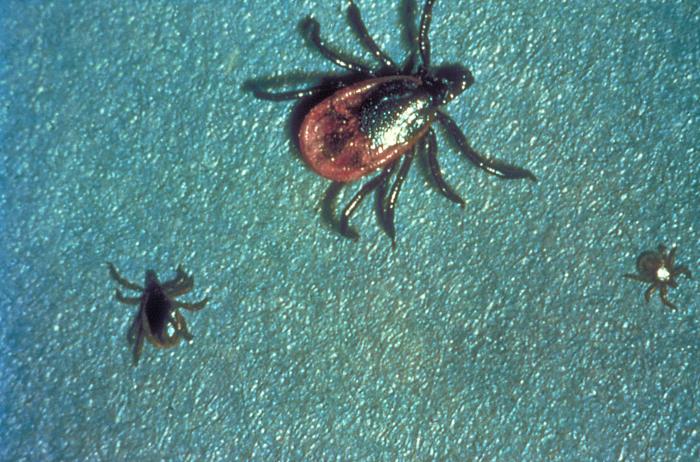Anaplasmosis is a tickborne disease caused by bacteria called Anaplasma phagocytophilum. It is spread by the bite of an infected blacklegged tick, the same tick that transmits Lyme disease, babesiosis, Borrelia miyamotoi and Powassan virus.

In Vermont since 2010, the number of cases reported annually has increased, roughly doubling year after year–three cases in 2010, 2011 (10 cases), 2012 (17), 2013 (37), 2014 (67), 2015 (139) and 201 cases in 2016.
How were the numbers in 2017? Yes, they doubled once again.
According to a Deerfield Valley News report, Bradley Tompkins, epidemiologist and program chief of tick-borne and enteric diseases for the Vermont Department of Health says the number has increased to 400.
Tompkins says a unique feature of the disease is that it is affecting mainly older populations in Vermont. “It’s ages 50 and above where we see a sharp increase,” says Tompkins. “It’s really making older Vermonters sick. It comes on like you get hit by a train. All of a sudden you feel horrible.”
Transmitted by the same tick that transmits Lyme disease (in fact co-infections do happen), anaplasmosis is caused by Anaplasma phagocytophilum.
It is an intracellular pathogen that is part of the Rickettsia (the same group of bacteria that cause Rocky Mountain spotted fever amongst other diseases) family.
Formerly known as human granulocytic ehrlichiosis, and as the former name of the disease implies, it’s an infection of the white blood cells.
LISTEN: Tickborne diseases: Laboratory diagnosis and treatment
People get this infection through the bite of an infected tick. Depending on the part of the United States you are, the tick species is different: the eastern part of the country is the black-legged tick, Ixodes scapularis, and in the western part of the country, Ixodes pacificus, is usually involved. These are deer ticks that are also involved in the transmission of Lyme disease.
After a period of a couple of days to a few weeks, most people infected with Anaplasma show influenza- like symptoms (fever, malaise, headache, nausea, vomiting, diarrhea and respiratory symptoms such as a cough). Symptoms tend to be more severe in those that are immunosuppressed and the elderly.
The case fatality rate (i.e. the proportion of anaplasmosis patients that reportedly died as a result of infection) has remained low, at less than 1%.
Related: Lyme disease: 14 states classified as ‘high incidence’
Because A. phagocytophilum infects the white blood cells and circulates in the blood stream, this pathogen may pose a risk to be transmitted through blood transfusions. Anaplasma phagocytophilum has been shown to survive for more than a week in refrigerated blood.
Doxycycline is the first line treatment for adults and children of all ages and should be initiated immediately whenever anaplasmosis is suspected.
Related:
- Lyme Disease Awareness Month: Prevention, symptoms, diagnosis and treatment
- Lyme disease: Olivia’s story, the LivLyme Foundation and the TickTracker app
- Lyme disease: New research on Borrelia burgdorferi persistence
- Lyme disease treatment: Some thoughts
- The history behind the Lyme disease controversy and what’s new in Lyme research
- Lone star ticks do not transmit the Lyme bacteria: Entomologist
- A look at the differences in geographical distribution of Lyme disease
- A new Lyme disease test: Dr Richard Marconi discusses the GLD Test
- Lyme disease, Stevia and the quest for better treatments
- Lyme disease: Borrelia biofilm in the body demonstrated
- Powassan virus: The spread is inevitable
- Lyme: Q & A with Paul Auwaerter, MD
- Lyme disease vaccine Phase 2 study slated for second half of 2018
- FDA issues warning to Utah company over unapproved Lyme disease product
- Reps. Smith, Peterson push new, historic Lyme Disease legislation


